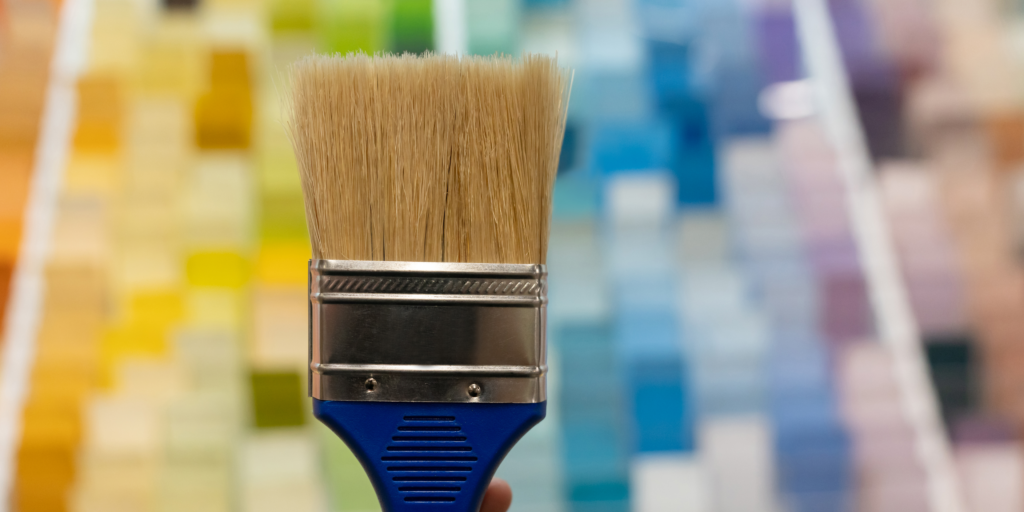It is stenciling with paint which is a highly DIY method and is used for precision in the creation of images on different surfaces. Stencils are a cheap and easy technique to embellish surfaces, such as walls, furniture, and fabric. Stencils are an easy way to trace complex designs and patterns without having to be an artist or having to spend a lot of money on pricey equipment.
Stencil painting is a method that provides two important benefits: precision and accuracy. Stencils create clean lines and sleek results if compared to freehand painting with no mess. Stencils give us an easy go-about copying the designs.
Choosing the Right Stencil for Your Project
A stencil has different aspects. Before you begin, be sure to check the size of the stencil and the surface area. A large stencil could easily become too big and look out of place against a set of small furniture, while a small stencil may be too small for a large wall. Another thing to think about is the design’s difficulty and your own skill level.

Different stencil types are suitable for unique applications. Wall paint and furniture that has a smooth surface require stencils that are adhesive to prevent the paint from running underneath. Plastic stencils are amazing because they are durable and can be used multiple times. Flexible stencils are a good choice for fabric or any curved surface.
Project stencils become discoverable with only a few clicks. Craft stores and e-retailers offer many designs of stencils that are ready to go. Design a custom stencil using the specialized cutting machines or hand-cut it on the stencil material. If you are fond of stencils, you can select the best one for your project from the numerous options available.
Preparing Your Surface for Stenciling
Preparing your surface before stenciling is fundamental for maximum success. First, do a thorough cleaning of the surface as these could obstruct stencil adherence or potentially hinder paint quality. While cleaning, use moderate detergent and warm water, and make sure the surface is dry.
Applying Paint to Your Stencil
There are various techniques that can be adopted to achieve your desired stencil, as the outcome is the main focus. Stippling, a technique where the stencil is painted with a brush or sponge, is an example. This way, paint wouldn’t be seeping under the stencil, and the color control would be enhanced.
Let’s try the brush or sponge rolling over the stencil as the next step. This process is responsible for a softer, blended appearance and is thus ideal for gradients and shading. Give several techniques a go to determine the most suitable one for your task.
Stenciling has a great chance of succeeding only if the right paint is used. Acrylic paint is a popular medium among artists because it has the advantage of being versatile, quick-drying, and, of course, an extensive color selection. It is also water-cleanable and works well for several surfaces. If you are going to paint a cloth, use fabric paint that was made for fabric.
Soak your brush or sponge with enough paint in order not to make the common mistakes that occur during painting. Running a line of paint too wide can cause bleeding, while an insufficient line of paint will leave uncovered areas. Before you begin your project, try to use a scrap piece of material to practice on and check how much paint and pressure you need to apply.
Tips for Achieving Clean and Crisp Stencil Lines
It is imperative that you clean and have neat lines in stencils for good results. Use painter’s tape or adhesive spray to ensure that the stencil is perfectly placed. It should be secured in such a way that the lines are sharp. This makes it possible to get neat edges and precisely define the contour of the object.
By using a dry brush or a sponge, tap the paint gently on the surface without brushing to prevent bleeding and smearing. Such an approach cancels out the paint seepage under the stencil, and the lines are clean. Don’t dunk the brush or sponge into the paint, and do not paint too much either because they could also cause bleeding.
Using the correct tools and materials Creative: Patterned Painting Methods with Sponges can give you an advantage over some messy crafts. Stencil brushes with short and stiff bristles are recommended to achieve the greatest precision and control. You may use sponges if you like them, but pay attention to the fact that their flat edges should match the stencil to make your application more precise.
Customizing Your Stencil Design
Having a stencil designed in a way that suits you best brings a personal touch to your project, even if it is made of ready-made stencils with plenty of designs. Various features can be incorporated into your stencil design, and it may be modified in size and scale. Apply a variety of stencils to create some interesting artwork.

Introduce some colors and textures to the stencil design to improve the perception of it. Different colors or shading add depth and dimension. Explore metallic or glossy paints that will contrast the textured background.
While you’re being creative, you can make your own stencil. The design is custom-made for the project that you are carrying out. Hand-cutting stencil designs can be done either using cutting equipment or creating them with computer software and a laser cutter.
Cleaning and Maintaining Your Stencils for Reuse
Stencils should be washed or cleaned after each use to extend the life span. Make sure that you don’t dry it, and remove the stencil by cleaning it immediately after you finish the work, depending on the kind of paint you use. Wash off the paint with warm water and mild soap, and be careful not to damage the stencil’s thin details.
When you are done, leave it out to dry and put it away for later. Moreover, the stencil folding or creasing may damage it over time. Solely, in the case of stencils, keep them flat or on a sleeve to prevent bends or scratches.
Be careful and delicate with the stencils to have them last longer. Don’t damage the stencil with sharp chemicals or abrasives. Stencils can be exploited and reused to make beautiful patterns for future projects by cleaning and storing them properly.
DIYers have a broad range of options through paint stenciling, which can be very creative. Stenciling is a great option for decorating walls, furniture, and even fabrics without any prior art knowledge. This is a wonderful technique of painting that can be achieved by choosing a proper stencil, preparing your surface, and painting carefully so that you can produce stunning designs that will leave everyone speechless.
In order to achieve the desired effect, seek for other approaches and materials. Be careful to clean and maintain stencils after each use in order to ensure their upkeep and the possibility of their continued use. For your next DIY task, why not try paint stenciling? This technique is adaptable and easy. It produces breathtaking effects.

